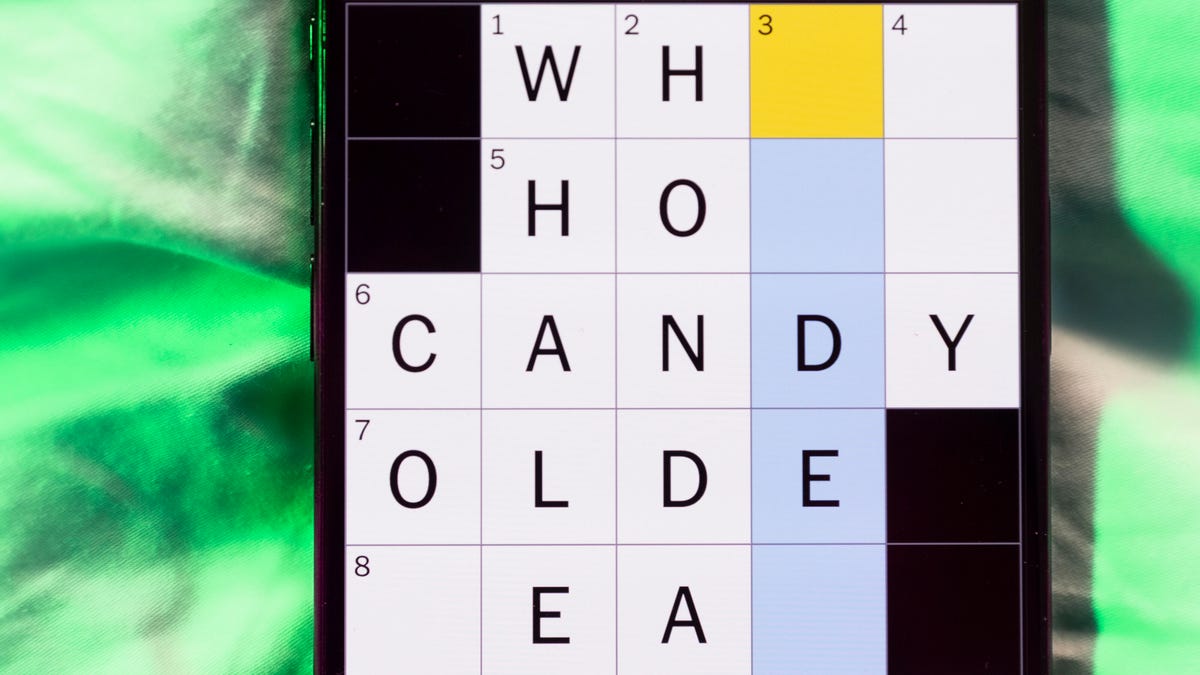Technologies
SpaceX Starship Mission 3: How to Watch the March 14 Launch
SpaceX is inching closer to another Starship launch. And its third mission may be its most ambitious yet.

Rocket launches can be thrilling to watch, but the last two SpaceX Starship launches offered a little more than viewers bargained for: both spaceships exploded after takeoff. Still, the company considered the missions successful, thanks to the data and information it was able to collect. And it’s not stopping. SpaceX on Tuesday announced plans to launch its third Starship mission on March 14, pending US regulatory approval.
The mission will stream live on X, the social media platform owned by SpaceX owner Elon Musk. You’ll have to be up early to watch, as the streaming is scheduled to begin at 7:30 a.m. ET, about 30 minutes before scheduled liftoff. In a mission description on its website, however, SpaceX said the mission timing was «likely to change,» telling viewers to keep checking back.
Starship is arguably the most ambitious effort for Musk, who runs the satellite-based internet company Starlink, along with EV maker Tesla, X and the neurotechnology company Neuralink. The Starship missions are critical to SpaceX’s — and Musk’s — goal of getting to and eventually settling the moon and Mars.
Now, as SpaceX looks ahead to this mission, it has much more to accomplish. And with a new flight trajectory and hopes of even greater data insights, the space company’s third mission may prove to be its most important yet.
What to expect from the Starship mission
SpaceX’s third Starship mission is designed to test whether the spacecraft can complete certain tasks. After liftoff, the company will attempt to open Starship’s payload door and transfer its propellant from one part of the starship to the other. For the first time, SpaceX will also attempt to relight its Raptor engine while in space, a test that could be critical for future missions as it eventually tries to propel Starship through space.
Starship is taking a different flight path this time around, and will attempt to land safely in the Indian Ocean instead of the Pacific Ocean. In a statement, SpaceX said that the new flight path is designed to maximize «public safety,» but the company didn’t discuss how.
The new flight path will also pave the way for SpaceX to try «in-space engine burns,» a reference to the company attempting to reignite the Raptor engine in space.
This mission is slated to last for an hour and 15 minutes. Previous missions, if completed, would have lasted 90 minutes.
What happened in the previous missions?
April mission: Forced detonation
The first Starship mission launched in April 2023. Early on in the mission, the two stages of the Starship — the reusable upper stage, called Starship, and its Super Heavy first-stage booster — were supposed to separate. Unfortunately, that didn’t happen, and for safety reasons, the SpaceX team was forced to detonate the Starship just 4 minutes into the mission.
November mission: Explosion due to liquid oxygen
In November 2023, Starship launched its second mission. That time around, Starship was able to separate its two stages and it reached nominal first-stage engine burn. However, Starship exploded 8 minutes after launch, when it tried to vent its liquid oxygen. Oddly, the explosion may not have needed to happen. Earlier this year, Musk said on a real mission carrying payload — meaning the materials a spaceship carries to perform its scientific mission — liquid oxygen wouldn’t be onboard.
Third time’s the charm?
While both missions technically failed, SpaceX has called them, especially the second mission, successful. And the company cautioned that even if the upcoming third mission goes awry, it’s not all bad.
«Starship’s second flight test achieved a number of major milestones and provided invaluable data to continue rapidly developing Starship,» the company wrote on its site. «Each of these flight tests continue to be just that: a test. They aren’t occurring in a lab or on a test stand, but are putting flight hardware in a flight environment to maximize learning.»
When will the Starship mission launch?
Starship’s third mission is set to launch on March 14 at 8 a.m. ET. However, in order for that to happen, the weather will need to cooperate and there must be no issues with the Starship in the run-up to launch.
Additionally, SpaceX is able to launch Starship only after receiving a Federal Aviation Administration license, which it has yet to receive. That’s likely why SpaceX has said that the timing of the launch is «dynamic and likely to change.»
How to watch Starship mission 3
SpaceX will offer two livestreams for watching the third mission live.
The first option is the SpaceX third mission landing page, where the SpaceX broadcast team will go live 30 minutes before launch.
Not surprisingly, given Musk’s involvement in both SpaceX and X, the mission will air live on SpaceX’s X account. It will go live 30 minutes before launch.
Technologies
iPhone 17 Preorders Spike and Overall Phone Sales Aren’t Slowing Down Despite Tariffs
Global smartphone shipments saw a notable increase in the third quarter of 2025. Plus, preorders for Apple’s new iPhone 17 beat out the iPhone 16.

Despite tariffs and market uncertainty, global smartphone shipments increased 2.6% in the third quarter of 2025, compared to the same time last year, according to the International Data Corporation. Additionally, preorders for the iPhone 17, which launched last month, outpaced last year’s iPhone 16.
These increased sales include premium phones like the latest iPhones and Samsung foldables, suggesting yet again that pricier phones still sell in periods of economic strain. It’s a remarkable achievement, says IDC senior research director Nabila Popal, citing shrewd financing options as the reason people keep buying these high-end phones, which cost anywhere from $800 to nearly $2,000.
«[Phone makers] have mastered the art of innovation not only in hardware and software to entice upgrades but also in removing purchase friction. They have flawlessly combined cutting-edge devices with innovative financing models and aggressive trade-in programs that make the upgrading decision a ‘no-brainer’ for consumers,» Popal said in an IDC press release.
Apple sold 58.6 million iPhones this quarter, an increase of 2.9% over the same period in 2024, with more preorders for the iPhone 17 series than its predecessor. But Samsung wasn’t far behind, with its Galaxy Z Fold 7 and Galaxy Z Flip 7 selling better than all of the company’s prior foldables. The company still reigns atop the phone market with 61.4 million phones sold, representing 19% of the market in the third quarter of this year — an increase of 6.3% from the same period last year. Meanwhile, Apple lands slightly behind Samsung with 18.2% market share this quarter.
The other phone makers trailing Apple and Samsung are, in order: Xiaomi, with 13.5% of the market; Transsion, with 9%; and Vivo with 8.9%. The remaining companies in the phones industry, from Chinese stalwarts like Oppo and Honor to Motorola and Google, make up the remaining 31.4% of the market for the quarter. All told, 322.7 million phones were sold, up from 314.6 million in the third quarter of 2024, according to IDC.
IDC’s findings for the third quarter continue the small but steady growth of phone sales over the year, including a modest 1% increase in the preceding three months — which includes the April deadline when President Donald Trump unveiled sweeping tariffs. In the second quarter, IDC cited midrange devices like Samsung’s Galaxy A36 and other phones that started incorporating AI. But even persistent tariffs haven’t slowed down people’s appetites for pricier phones in the third quarter.
Technologies
Today’s NYT Mini Crossword Answers for Tuesday, Oct. 14
Here are the answers for The New York Times Mini Crossword for Oct. 14.

Looking for the most recent Mini Crossword answer? Click here for today’s Mini Crossword hints, as well as our daily answers and hints for The New York Times Wordle, Strands, Connections and Connections: Sports Edition puzzles.
Today’s Mini Crossword has an odd vertical shape, with an extra Across clue, and only four Down clues. The clues are not terribly difficult, but one or two could be tricky. Read on if you need the answers. And if you could use some hints and guidance for daily solving, check out our Mini Crossword tips.
If you’re looking for today’s Wordle, Connections, Connections: Sports Edition and Strands answers, you can visit CNET’s NYT puzzle hints page.
Read more: Tips and Tricks for Solving The New York Times Mini Crossword
Let’s get to those Mini Crossword clues and answers.
Mini across clues and answers
1A clue: Smokes, informally
Answer: CIGS
5A clue: «Don’t have ___, man!» (Bart Simpson catchphrase)
Answer: ACOW
6A clue: What the vehicle in «lane one» of this crossword is winning?
Answer: RACE
7A clue: Pitt of Hollywood
Answer: BRAD
8A clue: «Yeah, whatever»
Answer: SURE
9A clue: Rd. crossers
Answer: STS
Mini down clues and answers
1D clue: Things to «load» before a marathon
Answer: CARBS
2D clue: Mythical figure who inspired the idiom «fly too close to the sun»
Answer: ICARUS
3D clue: Zoomer around a small track
Answer: GOCART
4D clue: Neighbors of Norwegians
Answer: SWEDES
Technologies
Watch SpaceX’s Starship Flight Test 11
-

 Technologies3 года ago
Technologies3 года agoTech Companies Need to Be Held Accountable for Security, Experts Say
-

 Technologies3 года ago
Technologies3 года agoBest Handheld Game Console in 2023
-

 Technologies3 года ago
Technologies3 года agoTighten Up Your VR Game With the Best Head Straps for Quest 2
-

 Technologies4 года ago
Technologies4 года agoVerum, Wickr and Threema: next generation secured messengers
-

 Technologies4 года ago
Technologies4 года agoGoogle to require vaccinations as Silicon Valley rethinks return-to-office policies
-

 Technologies4 года ago
Technologies4 года agoBlack Friday 2021: The best deals on TVs, headphones, kitchenware, and more
-

 Technologies4 года ago
Technologies4 года agoOlivia Harlan Dekker for Verum Messenger
-

 Technologies4 года ago
Technologies4 года agoiPhone 13 event: How to watch Apple’s big announcement tomorrow
